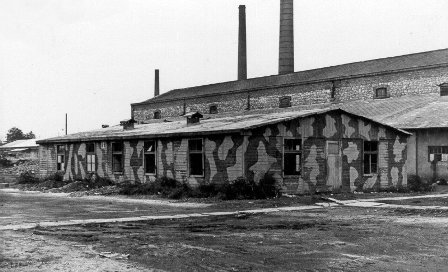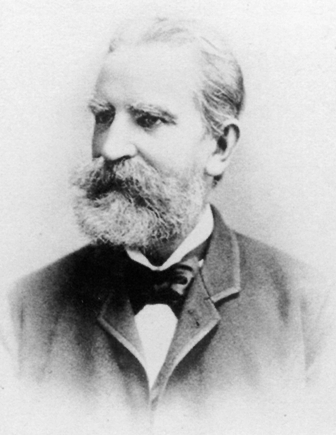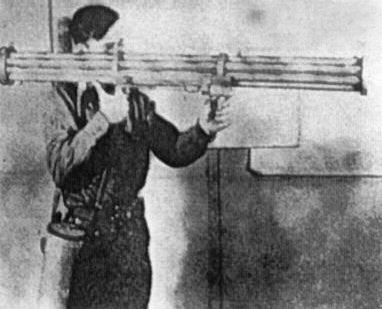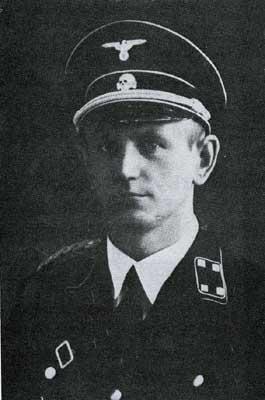Holocaust Education & Archive Research Team |
|
Occupation German Occupation of Europe Timeline
-
[The Occupied Nations]
Poland Austria Belgium Bulgaria Denmark France Germany Greece Hungary Italy Luxembourg The Netherlands Norway Romania Slovakia Soviet Union Sudetenland | ||||||||||||||||||||||||||||||||||||||||||||||||||||||||||||||||||||||||||||||||||||||||||
HASAG Hugo Schneider Aktiengesellschaft Metalwarenfabrik
HASAG was founded in Leipzig Germany in 1863 as a small lamp factory and became the Hugo Schneider Aktiengesellschaft in 1889, when it was converted into a metal products factory.
In 1930 the company had about one thousand employees and an annual turnover of 5 million marks. In 1932 Paul Budin, a member of the Nazi Party and a Sturmbannfuhrer in the SS, was appointed General Manager of HASAG. His deputies were Dr. Georg Mumme, Hans Fuhrer and Gustav Hessen; Dr Ernst von Schon was Chairman of the Board, and the shareholders included Hugo Zinsser, Ernst von Wildeneg and Richard Koch.
Beginning in 1933, the company developed contacts with the infantry ordnance branch of the Wehrmacht High Command, and it became a regular supplier of ammunition to the infantry and the Luftwaffe.
In 1934 HASAG was classified as a Wehrmachtsbetrieb (a company working for the armed forces). By 1939 its annual turnover was 22 million marks and it employed thirty-seven hundred workers.
HASAG’s status was raised to that of Rustungsbetrieb (armament’s company) in 1939. When the German armaments industry was re-organised in 1940, Budin was appointed the Chairman of Special Committee II, which had the task of supervising the production in the Reich of light ammunition for the infantry and the air force.
When Albert Speer was appointed Minister of Armaments in 1942, the committee’s range of responsibilities was broadened and Budin’s stature also grew as a result. In 1944 HASAG was charged with the mass production of infantry rocket launchers and received Hitler’s thanks for its achievements. HASAG – Leipzig was also singled out as an “Exemplary National Socialist Enterprise.”
In Germany during the war HASAG had eight plants in Germany, with two categories of workers. The first was that of civilian workers, men and women from all over Europe, especially the Slavic countries.
Some chose to work for HASAG but the majority were forced labourers, by 1941 HASAG was employing a large number of Polish and Croatian voluntary workers, and in subsequent years it also employed French and Russian workers.
Special open camps were established in the vicinity of the plants for the Slavic workers, but they were kept under strict police surveillance, the pay for these workers was very low.
The second category was that of concentration camp prisoners. Beginning in the summer of 1944, labour camps were established next to each HASAG plant, all of them as Aussenkommandos (satellite units) of the Buchenwald concentration camp.
According to incomplete data based on the Buchenwald concentration camp card index, the composition and size of the work force in the HASAG labour camps on the 31 January 1945 was as follows:
The employment by the HASAG industries of such a large number of female forced labourers was determined by a number of factors:
Between twenty thousand and twenty-two thousand prisoners of different nationalities passed through the HASAG labour camps in Germany from their establishment until their final liquidation in April 1945.
With the advance of the Allied forces, some of the prisoners were transferred to other camps, some prisoners embarked on “death marches” in small groups and it is difficult to estimate the number of prisoners who were murdered or who died en route.
Between 70 and 80 percent of the Jewish prisoners in the HASAG camps in Germany were estimated to have survived. In Poland following the German invasion in September 1939 and occupation HASAG began operating in the Radom district and a year later in 1940 on the recommendations of the Armed Forces High Command HASAG was put in charge of the administration of the ammunition factories in Skarzysko – Kamienna, the Granat grenade factory in Kielce and the Rakow foundry in Czestochowa.
The three plants were also classified as Wehrmachtsbetriebe and in early 1943 HASAG acquired the plants from the Generalgouvernement for a payment of 16.5 million zlotys – 1.5 million Reichsmarks.
After the German invasion of the Soviet Union in June 1941 HASAG became the main supplier of ammunition to the Generalgouvernement. Figures show that on the 1 February 1942, HASAG was the largest employer among the sixty-four Wehrmachtsbetriebe in the Generalgouvernment, with a workforce of 13, 850 mostly Poles. Of these 10,267 worked at the Skarzysko – Kamienna factories, 1,379 at Granat and 2,204 at the Czestochowa foundry.
In the spring of 1941, HASAG began transferring its Polish workers in the Generalgouvernement to its factories in Germany. In 1942 when absenteeism became rife among the Polish workers, HASAG set up two Arbeitserziehungstalten (labour training schools) in Skarzysko – Kamienna and Kielce.
The prevailing shortage of workers led to an agreement between the Inspectorate of Armaments and SS-Obergruppenfuhrer Friedrich Wilhelm Kruger, the Hohere SS und Polizeifuhrer Ost (Higher SS and Police Leader East) of the Generalgouvernement for the employment of Jews in the armaments industry.
Under this agreement signed on the 12 October 1942, six forced –labour camps were established by HASAG in the vicinity of Radom. Jews from Poland, Austria, Czechoslovakia, Germany and Hungary were incarcerated in them and put to work for the German war effort.
The average number of prisoners in the HASAG labour camps and the total number of Jewish prisoners who passed through them are as follows:
For each Jewish prisoner in the labour camps HASAG paid four to five zlotys per day, less maintenance costs, into the account of Herbert Bottcher, the SS und Polizeifuhrer for the Radom district.
The prisoners living conditions differed from one camp to another depending on the attitude of the factory managers. In general, the policy of “Vernichtung durch Arbeit (extermination through work) was applied, and in all camps selections were undertaken from time to time, culminating in the killing of all those who were no longer considered “fit for work.”
On the 16 November 1943 at the Skarzysko- Kammienna ammunitions factory the camp was surrounded in the morning by Ukrainians under the command of SS. The Ukrainians approached a barrack which housed prisoners exhausted from their labours on the night shift. The Ukrainians announced: “Come out, all those who are weak will receive a double portion of soup.”
At first the offer had the desired results as many of the weak, sick and starving prisoners staggered from the barrack in search of the soup. Suddenly , however, they saw the danger, with the heavily armed Ukrainians and trucks beyond. Those who could take flight did so, but all were shot down.
The rest were loaded onto lorries and driven to an execution site on the grounds of the camp itself. As the trucks moved off, the Ukrainians threw a few pieces of bread to the prisoners. Despite their weakness, the Jews fought for the bread. Roza Bauminger later recalled; “It suddenly dawned on me what hunger really was, I was so hungry myself. Inside the lorry, I saw scenes from Dante’s Inferno.
The sick people forgot about their illnesses, and at that moment when they were being driven off to their deaths, they fought. For each of them, the piece of bread was more important than the thought that they were going to be killed.”
From July 1944 until early 1945, HASAG transferred to the Reich most of the equipment and raw materials it had in its factories in the Generalgouvernement, together with groups of Polish and Jewish workers.
Paul Budin is assumed to have committed suicide together with his wife in April 1945, when he blew up the company’s head office building in Leipzig, and it should be noted that no HASAG personnel were put on trial at the International Military Tribunal (IMT) in Nuremberg.
Sources:
The History of the Second World War – published by Purnell London 1966 Encyclopaedia of the Holocaust The Holocaust, by Sir Martin Gilbert, published by Collins London 1986 Holocaust Historical Society Wiener Library Yad Vashem PRO
Copyright Chris Webb H.E.A.R.T 2010
|





